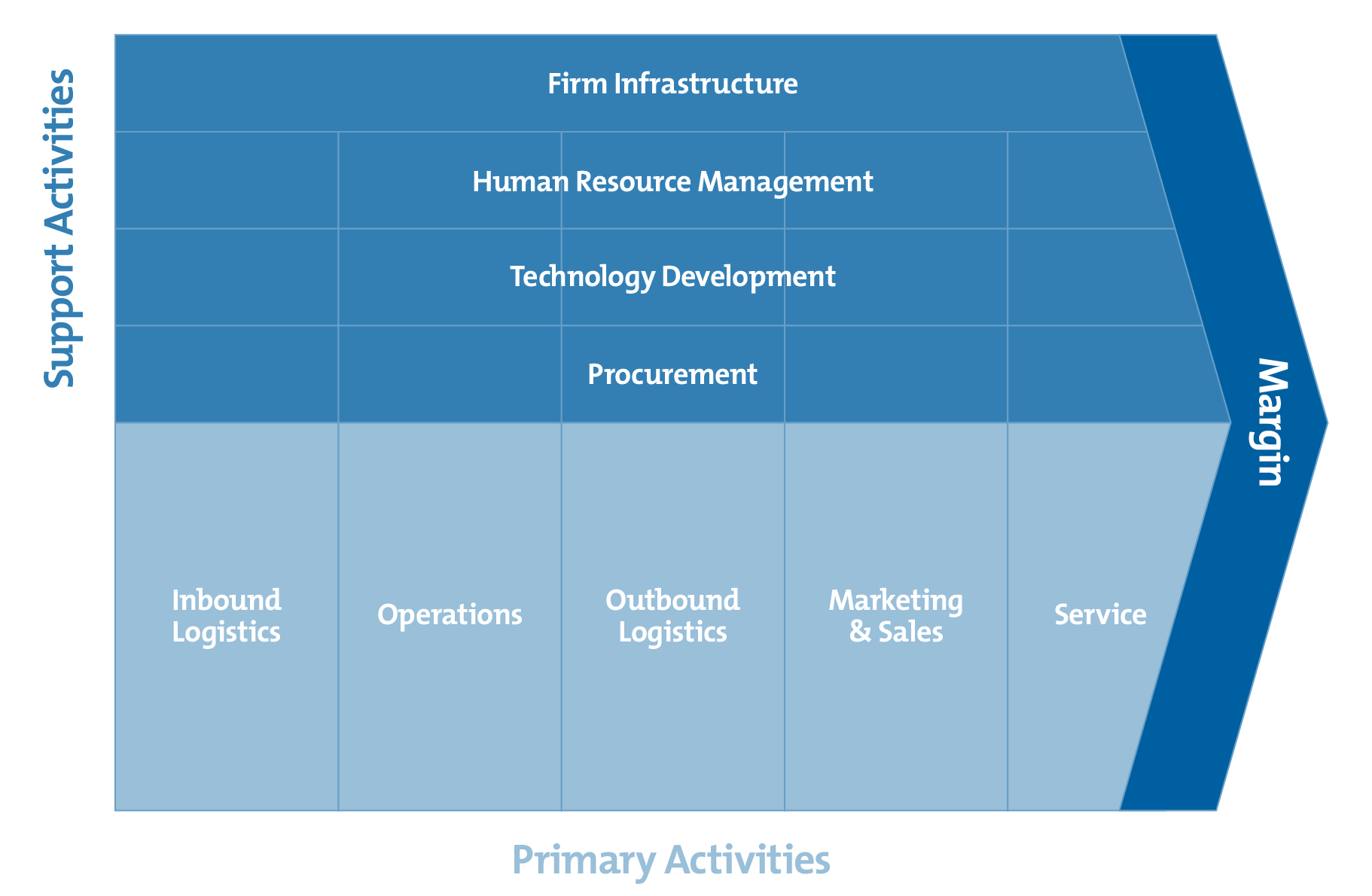Value Chain Analysis
Elements in Porter's Value Chain
Rather than looking at departments or accounting cost types, Porter's Value Chain focuses on systems, and how inputs are changed into the outputs purchased by consumers. Using this viewpoint, Porter described a chain of activities common to all businesses, and he divided them into primary and support activities, as shown below.

Primary Activities
Primary activities relate directly to the physical creation, sale, maintenance and support of a product or service. They consist of the following:
- Inbound logistics – These are all the processes related to receiving, storing, and distributing inputs internally. Your supplier relationships are a key factor in creating value here.
- Operations – These are the transformation activities that change inputs into outputs that are sold to customers. Here, your operational systems create value.
- Outbound logistics – These activities deliver your product or service to your customer. These are things like collection, storage, and distribution systems, and they may be internal or external to your organization.
- Marketing and sales – These are the processes you use to persuade clients to purchase from you instead of your competitors. The benefits you offer, and how well you communicate them, are sources of value here.
- Service – These are the activities related to maintaining the value of your product or service to your customers, once it's been purchased.
Support Activities
These activities support the primary functions above. In our diagram, the dotted lines show that each support, or secondary, activity can play a role in each primary activity. For example, procurement supports operations with certain activities, but it also supports marketing and sales with other activities.
- Procurement (purchasing) – This is what the organization does to get the resources it needs to operate. This includes finding vendors and negotiating best prices.
- Human resource management – This is how well a company recruits, hires, trains, motivates, rewards, and retains its workers. People are a significant source of value, so businesses can create a clear advantage with good HR practices.
- Technological development – These activities relate to managing and processing information, as well as protecting a company's knowledge base. Minimizing information technology costs, staying current with technological advances, and maintaining technical excellence are sources of value creation.
- Infrastructure – These are a company's support systems, and the functions that allow it to maintain daily operations. Accounting, legal, administrative, and general management are examples of necessary infrastructure that businesses can use to their advantage.
Companies use these primary and support activities as "building blocks" to create a valuable product or service.

No Comments